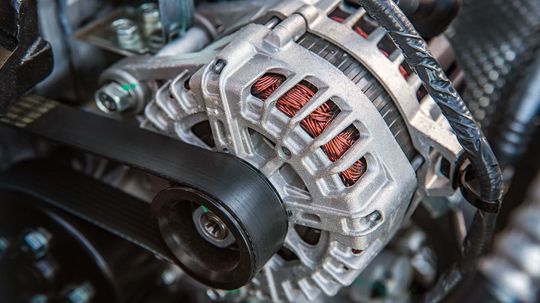Unleashing the untapped potential of electrical energy generation, alternators are a marvel of engineering ingenuity. With their ability to convert mechanical power into alternating current (AC), these devices have revolutionized various industries.
An In-Depth Look at Alternator Mechanics
Alternators consist of three main components: a rotor, stator, and diode rectifier assembly. The rotor is an electromagnet that spins within the stator’s magnetic field when powered by an external source such as an engine or turbine. This rotational motion induces voltage in the stator windings through electromagnetic induction.
The generated AC voltage from the stator windings is then converted into direct current (DC) using a diode rectifier assembly. This conversion process ensures compatibility with most electrical systems and allows for efficient utilization across various applications.
Furthermore, alternators employ a regulator to control output voltage and maintain optimal charging levels for batteries or other electrical loads connected to them. By monitoring system requirements and adjusting excitation current supplied to the rotor winding, regulators ensure stable operation under varying conditions.
Evolving Applications and Advancements in Alternator Technology
In recent years, advancements in alternator technology have paved the way for enhanced efficiency and performance across multiple sectors. From automotive industry innovations like regenerative braking systems that harness kinetic energy during deceleration to power vehicle electronics, to renewable energy solutions utilizing high-output alternators in wind turbines or hydroelectric generators – these developments continue to shape our modern world.
Furthermore, ongoing research focuses on improving materials used in alternators’ construction to enhance durability while reducing weight and size constraints. Additionally, exploring alternative cooling methods such as liquid cooling can mitigate thermal stress on vital components during prolonged operation, ensuring prolonged lifespan and reliability.
Moreover, the integration of smart technologies and advanced control systems enables alternators to adapt dynamically to changing electrical demands. This flexibility optimizes energy conversion efficiency while minimizing wasted power, contributing to a greener and more sustainable future.
A Bright Future for Alternator Technology
In conclusion, alternators serve as vital components in numerous industries by efficiently converting mechanical energy into electrical power. With ongoing advancements propelling their capabilities forward, these devices continue to play an integral role in powering our modern world. As technology evolves further, we can expect even greater efficiency, versatility, and sustainability from this remarkable invention.


